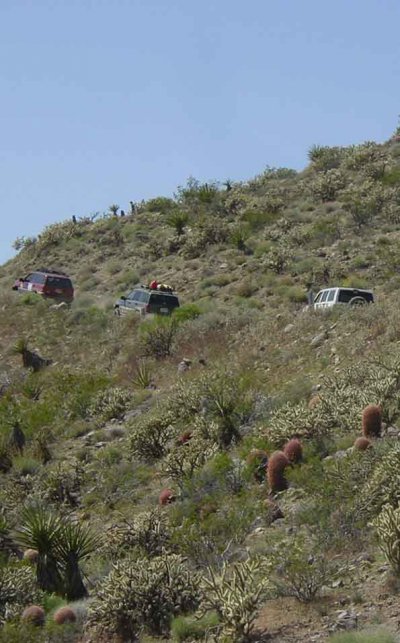MagicMtnDan
FRF Addict
You don't know what you're missing!


Disclaimer: Links on this page pointing to Amazon, eBay and other sites may include affiliate code. If you click them and make a purchase, we may earn a small commission.



You don't know what you're missing!

Alright... as a "hardcore camping" newbie, how does one bring their own bathroom? Does that amount to a shovel, some TP and maybe some hand sanitizer?
Greeeaaaat. I can tell this trip is gonna be REAL fun with friends like you to show me the way...A rock usually can handle all three jobsoopstorm: :thumbsup:
I had emailed those folks, thanking them for the blog. I also asked if they had any general suggestions for a "newbie to The Road". Here's their response:
So... what radios are the guys carrying?Thank you! We're so glad the blog is serving its purpose.
It sounds as if you should be in good hands if you're going with a group that has done this before and is getting the proper permits, etc. You're certainly starting off on the right foot by wanting to be prepared for anything.
If you don't already have one, what would be most helpful is the Mojave Road Guide by Dennis Casebier, although you may not be able to get one in the short time before your trip. Dennis is the one who rediscovered the road and developed it as a 4WD trail, and the book includes maps, mile-by-mile waypoints, the history, and what you see along the way today. It's likely that someone in your group has a copy. The odd coincidence is that the new edition with GPS waypoints is being released on Saturday, April 17, so you'd only be able to get the current version until then. The Park Service usually has them for sale at the Kelso Depot visitor center - depending on when you're heading out and from where, you might be able to swing by and pick up one there. We noted recently that DesertUSA at www.desertusa.com is selling the last few of their signed copies for a slight premium (regular price is about $20, depending on where you get it). The publisher, the Mojave Desert Heritage & Cultural Association, also sells them directly, so you could also conceivably stop there to get one, but you'd need to arrange that in advance since they do not have regular visiting hours. The phone number is (760) 733-4482 if you want to contact them.
Usually groups use CB or FRS radios to communicate as they're traveling, in order to ensure the group stays together and to alert each other to any issues. You should find out what kind of radios your group will be using and make sure you have a compatible one. Cell phones will work in some areas, but not all. The other "obvious" thing is a warm sleeping bag. You're going at one of the best times of year weather-wise, but it can still get pretty cold out there at night, especially if you're camping in the higher elevations. We saw a recent report of temps in the 30s or 40s. We always make sure we have different layers of clothes that will suit temps anywhere from near freezing to the 100s because you just never know what you're going to get. The elevation and terrain change as you traverse the road and it's often windy, so the temp usually varies throughout the day. And of course you want to capture your experience with a camera!
The only real "warning" is to be on the lookout for rattlesnakes, as they like these moderate temperatures. They're not usually a problem, but it's always wise to watch where you're walking. Also, keep in mind that as remote as the area is, there are multiple "escape routes" along the way that will get you back to some semblance of civilization pretty quickly if issues arise or you just aren't feeling comfortable with the situation. We've all bailed out at times because we just don't want to deal with disagreeable weather or a vehicle acts up. Have maps handy that show the major roads through the area, connecting to I-15 and I-40.
Perhaps the most important advice we can give is to "tread lightly and leave no trace." The National Park Service and the BLM have so far been very cooperative in allowing all of us to travel the Mojave Road, but that privilege can be revoked at any time if they deem it's being abused. We occasionally see evidence of people driving in areas that are marked as off-limits, trespassing on private property, leaving trash behind, damaging plant life or historic sites, or camping in spots that have not been previously disturbed. It's important to stay on the designated route and "do the right thing" so that all of us can continue enjoying this adventure in the future.
We hope you have a fun, successful first trip - and many more. It's a beautiful, fascinating journey. And if you think of any other questions, don't hesitate to ask...

